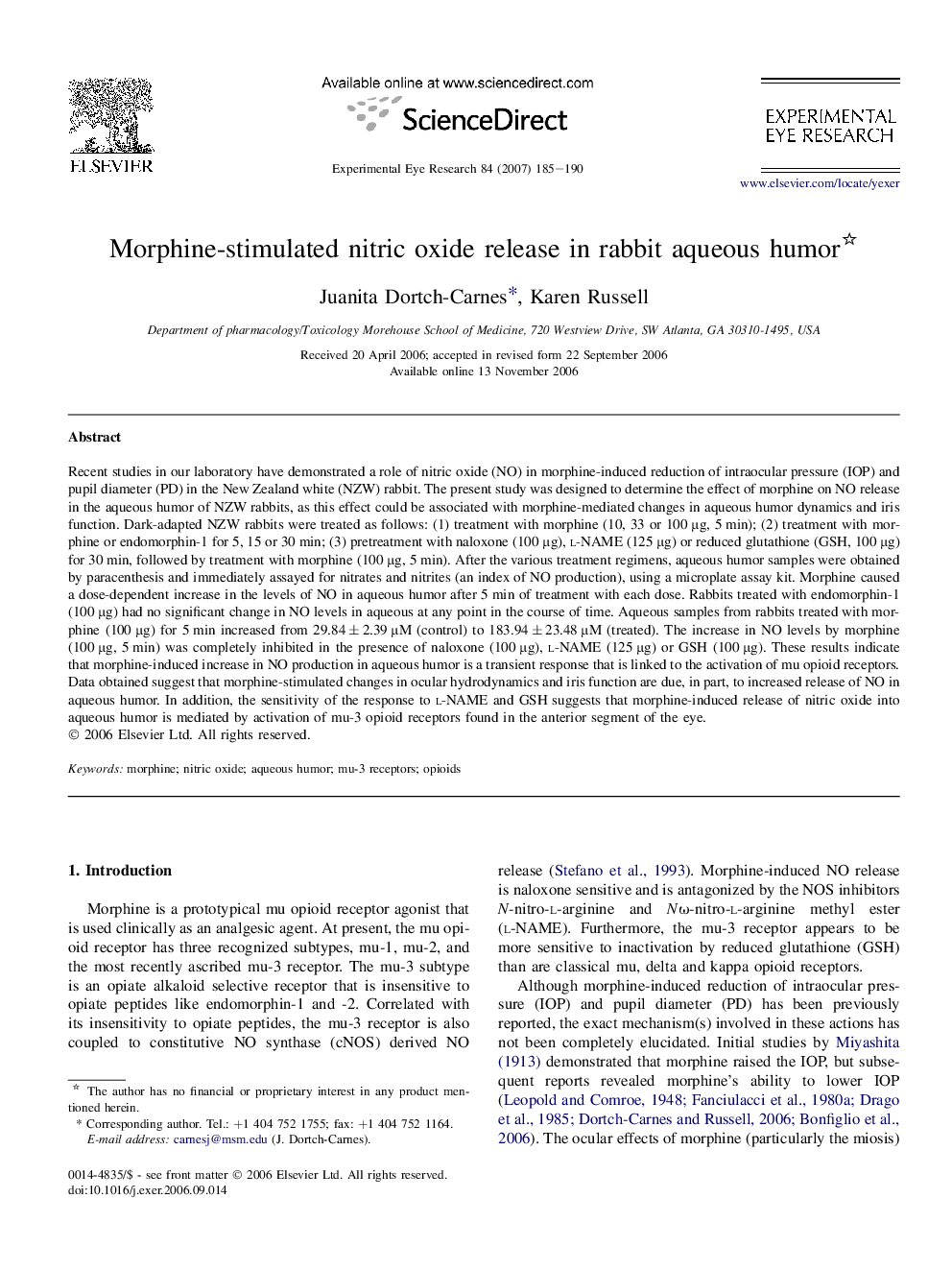| کد مقاله | کد نشریه | سال انتشار | مقاله انگلیسی | نسخه تمام متن |
|---|---|---|---|---|
| 4012410 | 1261192 | 2007 | 6 صفحه PDF | دانلود رایگان |

Recent studies in our laboratory have demonstrated a role of nitric oxide (NO) in morphine-induced reduction of intraocular pressure (IOP) and pupil diameter (PD) in the New Zealand white (NZW) rabbit. The present study was designed to determine the effect of morphine on NO release in the aqueous humor of NZW rabbits, as this effect could be associated with morphine-mediated changes in aqueous humor dynamics and iris function. Dark-adapted NZW rabbits were treated as follows: (1) treatment with morphine (10, 33 or 100 μg, 5 min); (2) treatment with morphine or endomorphin-1 for 5, 15 or 30 min; (3) pretreatment with naloxone (100 μg), l-NAME (125 μg) or reduced glutathione (GSH, 100 μg) for 30 min, followed by treatment with morphine (100 μg, 5 min). After the various treatment regimens, aqueous humor samples were obtained by paracenthesis and immediately assayed for nitrates and nitrites (an index of NO production), using a microplate assay kit. Morphine caused a dose-dependent increase in the levels of NO in aqueous humor after 5 min of treatment with each dose. Rabbits treated with endomorphin-1 (100 μg) had no significant change in NO levels in aqueous at any point in the course of time. Aqueous samples from rabbits treated with morphine (100 μg) for 5 min increased from 29.84 ± 2.39 μM (control) to 183.94 ± 23.48 μM (treated). The increase in NO levels by morphine (100 μg, 5 min) was completely inhibited in the presence of naloxone (100 μg), l-NAME (125 μg) or GSH (100 μg). These results indicate that morphine-induced increase in NO production in aqueous humor is a transient response that is linked to the activation of mu opioid receptors. Data obtained suggest that morphine-stimulated changes in ocular hydrodynamics and iris function are due, in part, to increased release of NO in aqueous humor. In addition, the sensitivity of the response to l-NAME and GSH suggests that morphine-induced release of nitric oxide into aqueous humor is mediated by activation of mu-3 opioid receptors found in the anterior segment of the eye.
Journal: Experimental Eye Research - Volume 84, Issue 1, January 2007, Pages 185–190